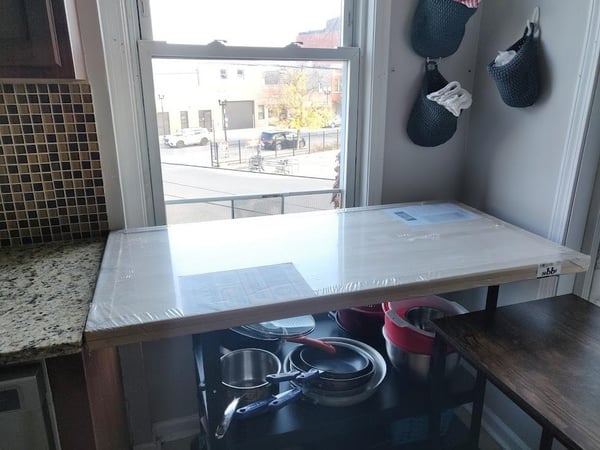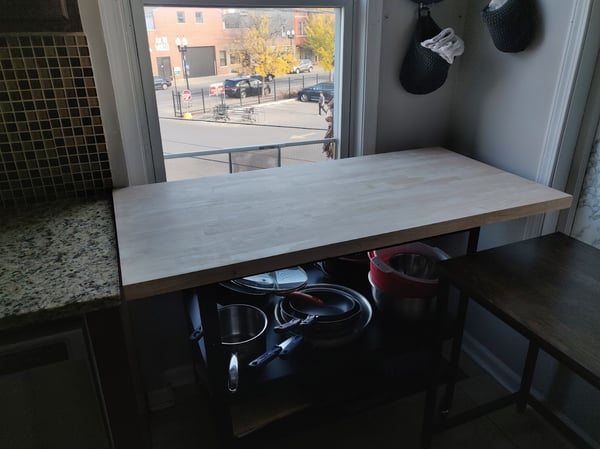Throughout my whole life in kitchens, there has always been one thing I’ve wanted to own. It wasn’t a sharp knife, fancy equipment, or even custom-engraved diamond plated knife steal that also doubled as a cast iron pan. Well, the last one I made up but it did sound cool, right? But you get the idea that I care none for the fancy things. The thing in most, if not all kitchens, that I dreamed of having most was a butcher block.
The sleek yet simple design combined with the versatility of using it as a cutting board and counter - what’s there not to love? So recently, I made the step to actualize that dream. And before you go asking “why didn’t I just buy one?”, well they are expensive! For that reason, I decided it would be more beneficial to build my own. This is that journey.
This endeavor was actually more straightforward than I was expecting it to be. I didn’t need to go into the mountains to saw a tree down and haul the wood back to my kitchen for prep. Conveniently enough, my local hardware store carried what I was looking for. Found in the countertop section, you’ll find butcher blocks/wood counters. Now you’ll notice that there are a few different varieties, and I’ll leave it up to you to decide on your preference of wood. For me, it came down to a selection between hera wood and birch wood. I ended up going with the hera wood variety because it had a similar quality to birch and is naturally rot-resistant. The birch did tempt me due to its more impressive wood grain and slightly higher hardness, but I don’t think I could justify those two additional qualities for double the price. The hera wood top was around $100 for a 4ftx2.5ft piece.


Starting out I used a little bit of sandpaper at 320 grit which gave me a smooth finish without having to spend all day sanding. I really was focusing on the high spots, rough spots, and rounding the corners a bit to avoid poking myself with them by accident in the future. This whole process of sanding both sides was quick and only took about 15-20 minutes. I recommend some breathing protection from wood shavings (i.e. mask).
Ready to keep moving, I move onto the last step before mounting, sealing the table. There are a few ways you can seal the table but the most common and easiest way to do so is by using a combination of wood conditioner and mineral oil.
Side note: most, if not all classes at The Chopping Block utilize our countertop butcher blocks that were constructed in the same format as explained above. We oil our tables once a week to keep them looking fresh and healthy!
